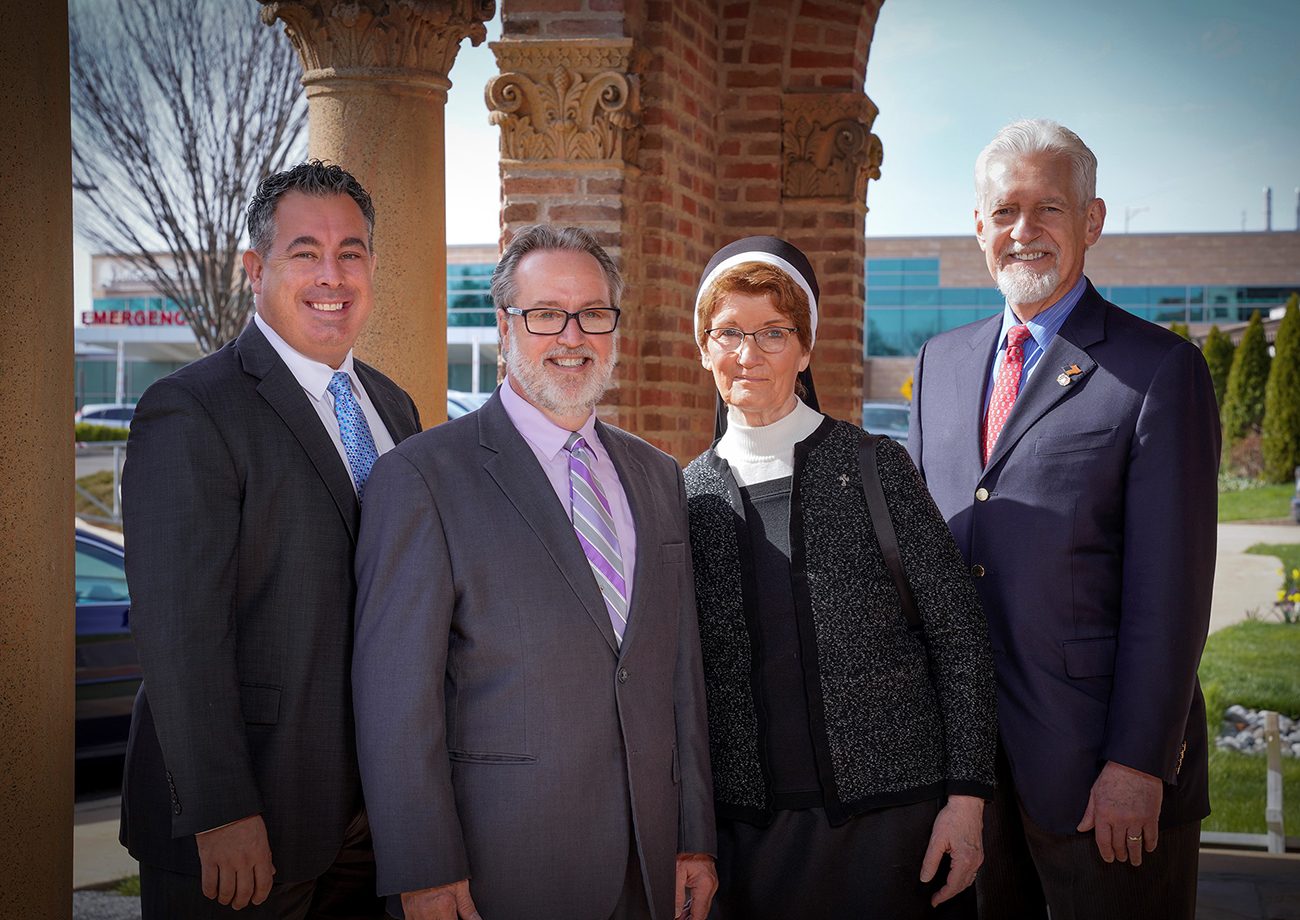Visitors and patients to Jefferson Hospital Torresdale see living examples of faith and medicine that, on this campus in far Northeast Philadelphia, intertwine.
That’s because the 258-bed hospital, a Level 1 Trauma Center, shares the same 44-acre campus with St. Michael, the name of the estate built in the 1800s by Philadelphia banker Francis Drexel as a summer retreat for the family, including his wife Emma Mary Bouvier Drexel and three daughters, Louise, Elizabeth and Katharine.
No one in the family suspected at that time that Katharine would found a congregation of religious sisters – the Sisters of the Blessed Sacrament – become a mother superior of that order and, in 2000, be declared a saint in the Catholic Church.
[hotblock]
Edward Turzanski, as chairman of the board of directors of Jefferson Health-Northeast (comprising the Torresdale, Frankford and Bucks hospitals) lives the board’s mission to balance spiritual proximity and healing. He works with executives and medical staff to recruit the best doctors, nurses and other professionals, and to bring in the most advanced medical technologies, he said.
(Read more about the Trauma Center at the hospital’s Sidney Kimmel Cancer Center.)
Faith comes into the picture when it comes to preserving the Drexel mansion, now used for administrative offices. St. Michael Chapel, relegated to common usage by the church, serves as a wellness center and a space for seminars and for a monthly blood drive, said Turzanski, who is a chairman of the hospital foundation.
“I think Mother Katharine Drexel would approve,” he said. “On any day, someone brings us a loved one. What they hope and pray for is the best quality of care, done with compassion, understanding, competence and concern.”
Medical miracles do come from heaven, as well from the tangible results of science and research.
Neurosurgeon Gentian Toshkezi has seen and even worked many of those miracles with the help of modern technology.
“Time in surgery is shorter, recovery is faster, and that is good for the patient,” he said, recounting the case of a woman he operated on whose neck fracture was pressing on her spinal cord.
[hotblock2]
The highlight of her one-month post-op checkup came when the woman walked into Toshkezi’s office and told him: “I’m going to dance with you.”
Technology supports such as CT scans, MRIs and robotic arms make the difference, the neurosurgeon said.
That miracles can be attained by prayer can be demonstrated by then-teenage Robert Gutherman’s conversation in with his doctor back in 1974.
“I can hear,” he told his physician. “No you can’t,” was the doctor’s response.
Gutherman’s ear bones were destroyed by an infection and the prognosis was that he would be permanently deaf.
But that wasn’t the case, not after prayers by Gutherman’s family to St. Katharine Drexel. Further exams showed his ear bones were perfectly normal.
Now 62, Gutherman, a resident of Bucks County, is still willing to talk about how prayer prevailed over the impossible.
Recently widowed — his wife Lyneen died in November — Gutherman is the father of three grown daughters and two grandchildren.
“Today there are prosthetics for hands, arms and legs, but nothing for ear bones. Medical science had come a long way, but miracles are still available for us now,” said Gutherman.
PREVIOUS: Where St. Katharine rode, cancer center rises in N.E. Phila.
NEXT: Efforts kick off to spread Gospel message person to person




Share this story